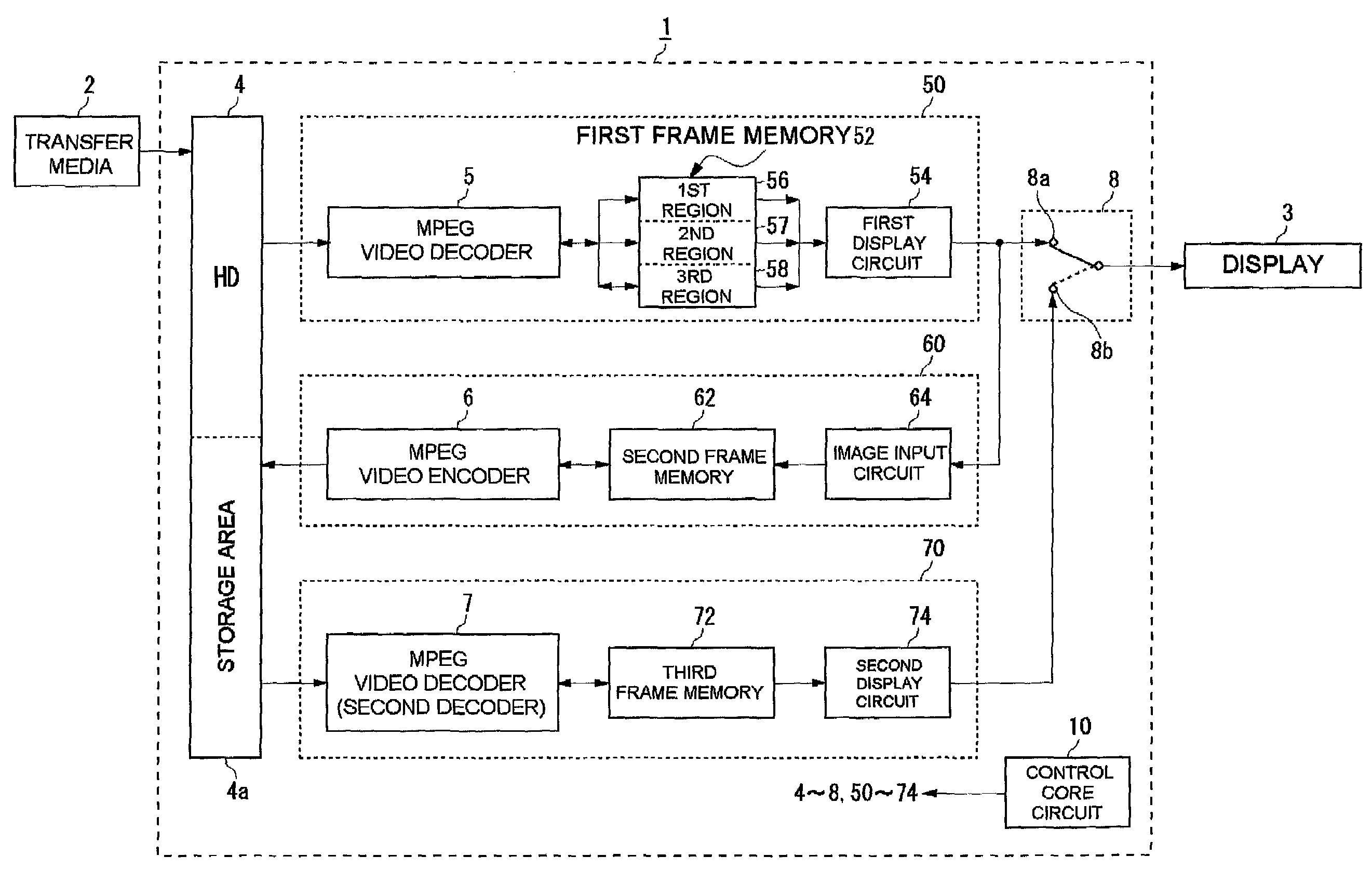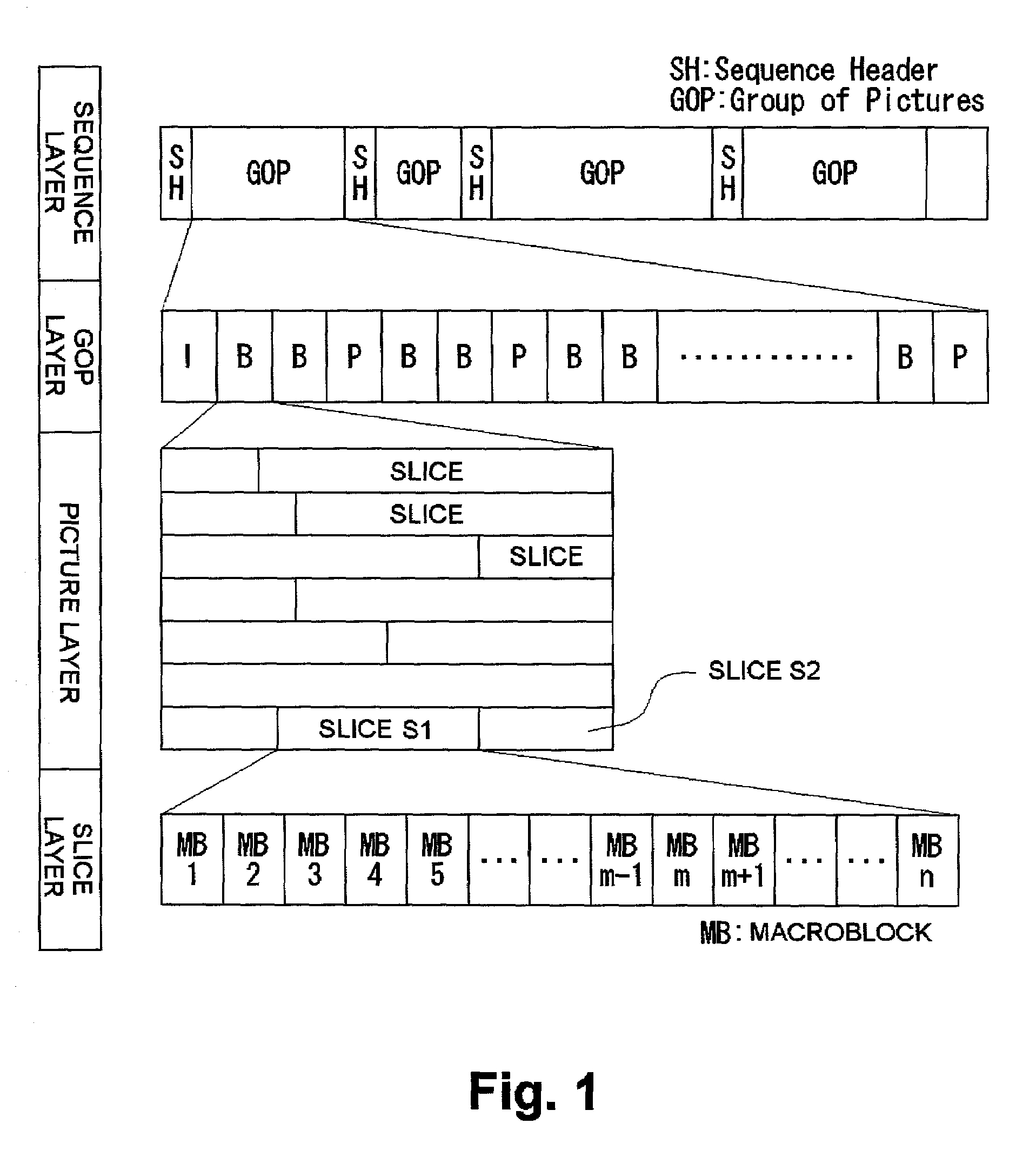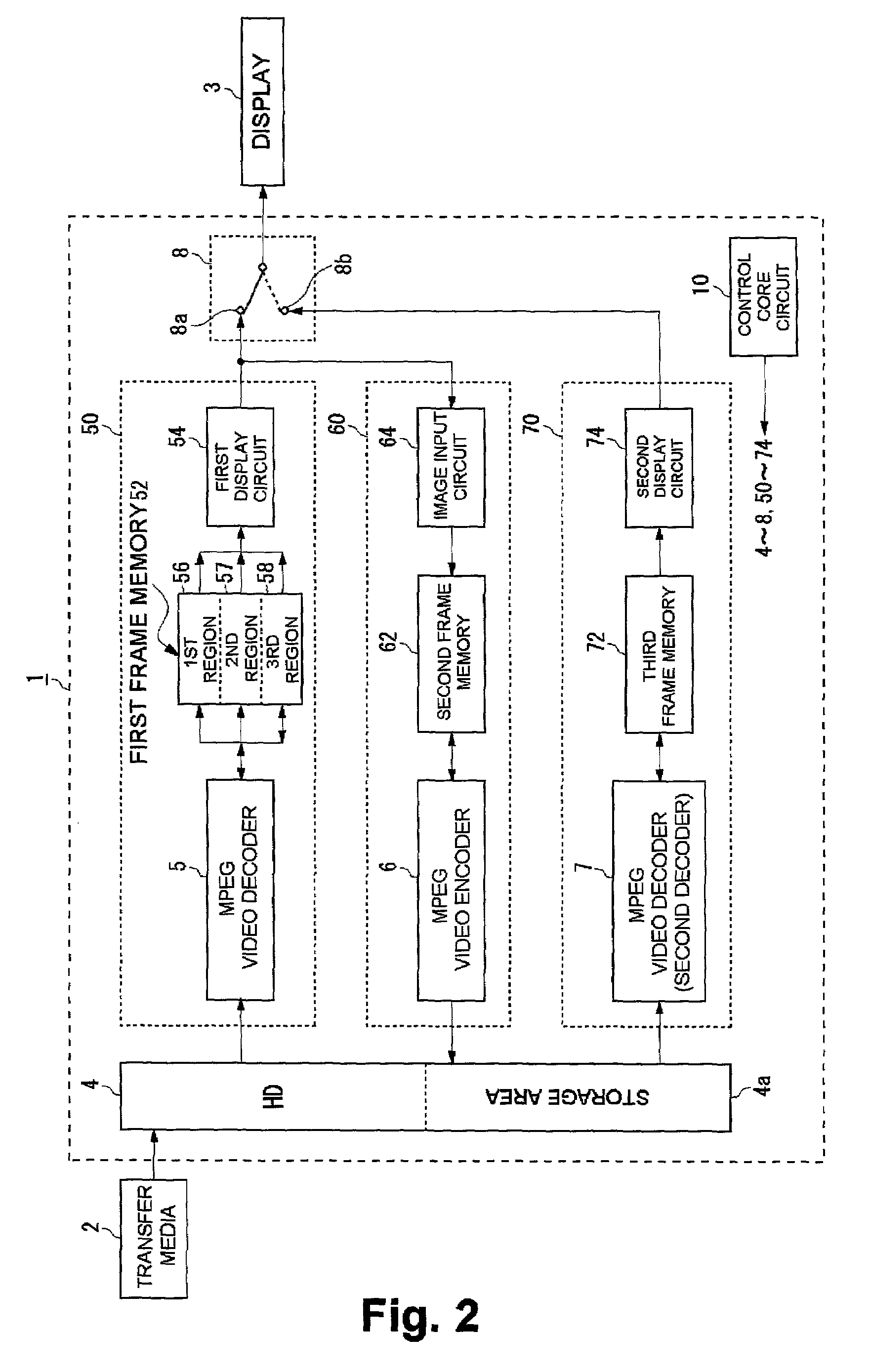Image processing using shared frame memory
a frame memory and image processing technology, applied in the field of image processing methods, can solve the problems of difficult to stop at a desired scene at a proper timing, difficult to reverse-reproduce a data sequence, and difficult to reproduce a recorded data series
- Summary
- Abstract
- Description
- Claims
- Application Information
AI Technical Summary
Benefits of technology
Problems solved by technology
Method used
Image
Examples
first embodiment
[0048]This first embodiment exemplifies a structure considered in a case where each block constituting the structure of an image processing apparatus is, for example, made to a single chip. The structure for this embodiment does not particularly take into consideration a correspondence thereof to the present invention, and merely presents examples to be compared and referred to the subsequent embodiments.
[0049]FIG. 2 shows a block circuit of an image reproducing apparatus 1 according to a first embodiment. This image reproducing apparatus 1 is incorporated into a movie camera, a still camera, a television, a video CD reproduction apparatus, a DVD reproduction apparatus or the like, which outputs the MPEG video stream from a transfer medium 2 to a display 3. The transfer medium 2 includes storage medium (video CD, CD-ROM, DVD, VTR and so forth), communication medium (LAN and so forth) and broadcasting medium (ground wave broadcasting, satellite broadcasting, CATV and so forth). Moreo...
second embodiment
[0071]This and subsequent embodiments have structures corresponding to the present invention. The second embodiment represents a more compact design version of the first embodiment. The second embodiment differs from the first embodiment in that the frame memories are so structured as to have a less capacity as a whole. That is, the first frame memory 52 and second frame memory 62 of the first embodiment are combined into one which is structured such that the total capacity thereof is for four frames.
[0072]FIG. 8 shows a block circuit of an image reproducing apparatus 1 according to a second embodiment. According to the first embodiment, the image video signals read out from the first display circuit 54 are recoded after they are converted to a reproduced image data sequence. In this second embodiment, however, a reproduced image data sequence before conversion into image video signals by the first display circuit 54 is read out and recoded. Hence, this second embodiment does not in...
third embodiment
[0080]A third embodiment represents a more compact design version of the second embodiment. The third embodiment differs from the second embodiment in that the frame memories are so structured as to have even less capacity as a whole. That is, the first frame memory 80 and second frame memory 90 of the second embodiment are combined into one which is structured such that the total capacity is for three frames only.
[0081]FIG. 9 shows a block circuit of an image reproducing apparatus 1 according to the third embodiment. A frame memory 100 is divided into a first region 102, a second region 104 and a third region 106, which correspond to the first region 82, the second region 84 and the third region 86 of the second embodiment, respectively. However, the third region 106 differs from the third region 86 of the second embodiment in that it is also used as a work area for a decoding processing by the second decoder 7. A display circuit 110 corresponds to the first display circuit 54 of t...
PUM
 Login to View More
Login to View More Abstract
Description
Claims
Application Information
 Login to View More
Login to View More - R&D
- Intellectual Property
- Life Sciences
- Materials
- Tech Scout
- Unparalleled Data Quality
- Higher Quality Content
- 60% Fewer Hallucinations
Browse by: Latest US Patents, China's latest patents, Technical Efficacy Thesaurus, Application Domain, Technology Topic, Popular Technical Reports.
© 2025 PatSnap. All rights reserved.Legal|Privacy policy|Modern Slavery Act Transparency Statement|Sitemap|About US| Contact US: help@patsnap.com



